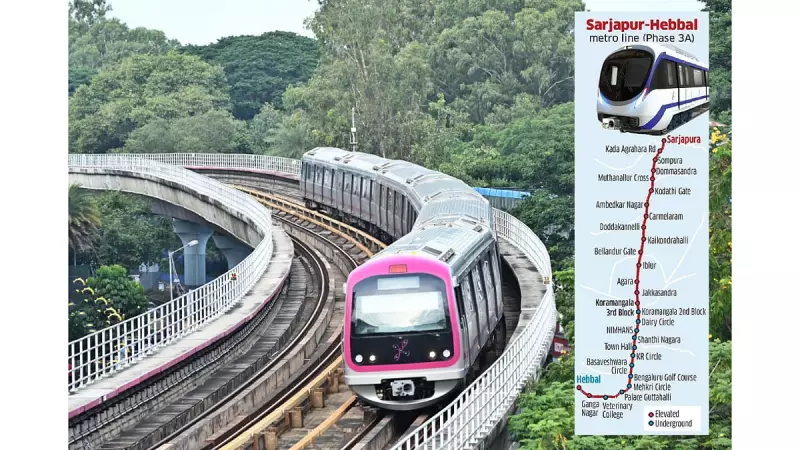
In a strategic move to optimize infrastructure costs, the Bangalore Metro Rail Corporation Limited (BMRCL) has announced significant design modifications for its upcoming Phase 3A expansion project. The corporation plans to reduce the length of underground stations by approximately 40 meters, a decision expected to yield substantial financial savings without compromising operational efficiency.
Strategic Redesign for Financial Prudence
The revised design approach affects key underground stations along the Phase 3A corridor, which will now be constructed shorter than originally planned. This calculated reduction represents BMRCL's commitment to fiscal responsibility while continuing to expand Bengaluru's rapidly growing metro network.
"This optimization allows us to maintain the same passenger capacity and service quality while significantly reducing construction costs," explained a senior BMRCL official. The decision comes after thorough technical evaluations confirmed that the modified station length would adequately serve passenger needs while delivering better value for public funds.
Phase 3A Project Overview
The Phase 3A expansion represents a crucial component of Bengaluru's urban transit master plan, connecting vital residential and commercial hubs across the city. The underground sections affected by this redesign include stations in high-density areas where real estate costs and construction complexities present significant challenges.
Key Benefits of the Revised Approach
- Substantial reduction in construction and land acquisition costs
- Faster project completion timelines
- Minimized disruption to surface-level activities
- Maintained operational capacity and passenger comfort
- Enhanced return on infrastructure investment
Engineering Innovations Enable Savings
BMRCL engineers have developed innovative design solutions that compensate for the reduced station length. These include optimized train scheduling, improved passenger flow management, and advanced platform screen door systems that maintain safety standards despite the dimensional changes.
"The 40-meter reduction might seem significant, but our operational simulations confirm that it won't impact passenger experience or system efficiency," the official emphasized. The corporation has conducted extensive modeling to ensure that the modified stations can handle projected passenger volumes during peak hours.
Broader Implications for Urban Infrastructure
This cost-optimization strategy sets a precedent for future metro projects across India, demonstrating how careful design modifications can deliver substantial savings without sacrificing functionality. As Indian cities continue to invest in mass rapid transit systems, such fiscally responsible approaches become increasingly important.
The Phase 3A project continues to move forward with this revised design, with BMRCL confident that the changes will benefit both the project timeline and overall budget while delivering much-needed metro connectivity to Bengaluru's growing population.





